The Coinage Act of 1792 set the stage for some of today’s most rare and valuable American coins. In this act, eagles, half dimes and milles, as well as the more familiar pennies and quarters, were established as the official mintage of the U.S. government. Gold, silver and copper made up the entirety of U.S. mintage at this time, though this later changed. Many of these american coins, the gold eagle denominations in particular, weren’t widely circulated until the gold rush of 1849. Then, once the U.S. stopped backing paper money by gold and moved away from the Gold Standard in 1933, all coins made of gold stopped circulating in the marketplace, making them extremely desirable and collectable today. Below are 5 of the most rare types of American gold coins.
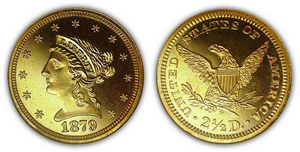
- Quarter Eagle: People today might find the value of this coin strange, as it was worth $2.50 during its time of circulation, from 1795 to 1933. $39,101 was paid for a 1914 version of this coin in January 2012.
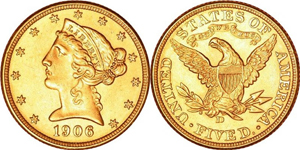
- Half Eagle: Continuing logically, the half eagle was worth $5, or half of an eagle coin, during its heyday. An 1884 version of a half eagle commanded $39,100 on the rare coins marketplace in November 2010.
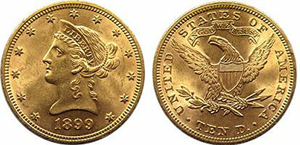
- Eagle: The eagle coin had a value of $10 during its circulation period of 1795-1933, and they generally contain about a half-ounce of pure gold, supplemented by copper alloys. The highest price paid for a 1907 $10 eagle gold coin was $39,780 in September 2010.
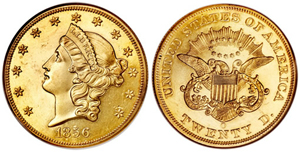
- Double Eagle: The double eagle is much as it sounds, double the worth of an eagle coin, or worth $20. This coin was not originally included in the Mint Act of 1792, and saw its first circulation in 1849 when the gold rush hit. In the early 20th century, President Theodore Roosevelt sought to redesign many U.S. mints during his term, and commissioned a famous American sculptor, Augustus Saint-Gaudens, to design the version pictured below. These coins are made of 90% gold and 10% copper alloy, and the most paid for one of these rarities from 1907 was $39,963, bought in January 2012.
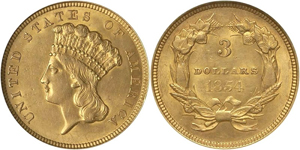
- Three Dollar Piece: This unique coin was originally intended to coincide with the postal system, worth $3 because in 1854, a roll of 100 stamps worth 3 cents each totaled exactly $3. The coin is 90% gold and 10% copper alloy. Only about 530,000 of them were minted, a small amount for U.S. coins, and the line was discontinued in 1889. $39,100 was paid for an 1887 three-dollar piece in March 2009.
Buying gold coins isn’t just for numismatists anymore; they can be a profitable and fun way to buy gold. As you can see, these rarities go for a pretty penny. Be on the lookout for any heirlooms that may be collecting dust in Granny’s attic, they could be worth a small fortune.

